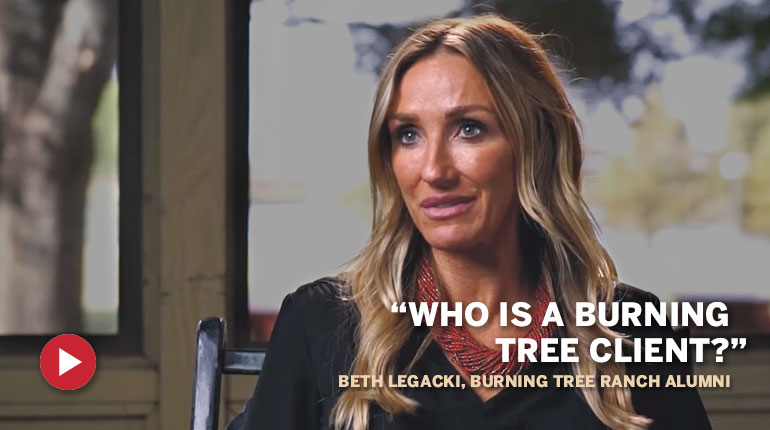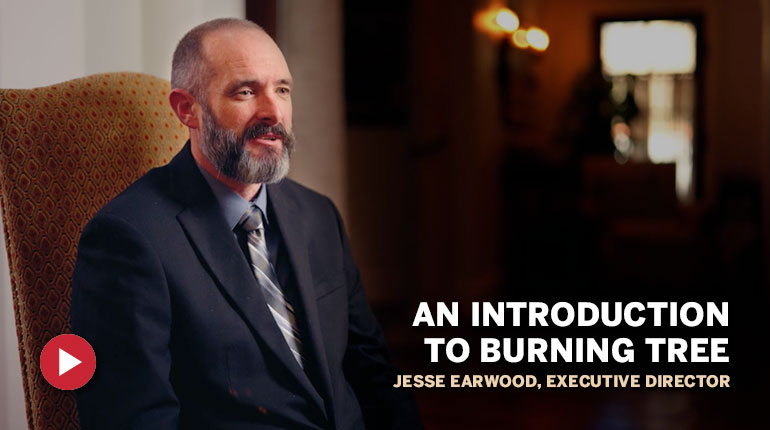Reactive Attachment Disorder (RAD) & Substance Abuse in a Dual Diagnosis
Reactive Attachment Disorder (RAD) highlights the profound impact early life experiences have on long-term emotional and relational health. Addressing the effects of RAD demands comprehensive therapeutic approaches, emphasizing the importance of a thorough understanding of attachment disorders to foster resilience and healing.
Reactive Attachment Disorder (RAD): A DSM-5 Explanation
In the DSM-5 (Diagnostic and Statistical Manual of Mental Disorders, Fifth Edition), Reactive Attachment Disorder (RAD) is classified under the category of “Trauma- and Stressor-Related Disorders.” This classification emphasizes the disorder’s roots in early childhood experiences of insufficient care, neglect, or instability. RAD is unique because it specifically arises from the failure to form regular attachments to primary caregivers during early development, distinguishing it from other disorders in the same category that might arise from a variety of stressors or traumatic events. Here’s a deeper look into RAD:
Who is Affected by RAD?
RAD typically affects children who have experienced severe neglect, abuse, or disruption of caregiver attachment before the age of 5. Children in unstable caregiving environments, such as frequent changes in foster care or institutions, are at higher risk.

Primary Causes of rad
The primary cause of RAD is a lack of adequate care and emotional nurturing. This can include persistent disregard for the child’s basic emotional needs for comfort, stimulation, and affection; repeated changes of primary caregivers that limit opportunities to form stable attachments; or rearing in unusual settings that severely limit opportunities to form selective attachments (e.g., institutions).
Identifying the Symptoms & Behaviors of RAD
RAD is characterized by a consistent pattern of inhibited, emotionally withdrawn behavior toward adult caregivers, manifested by rarely seeking or markedly resisting caregiver comfort when distressed. Children with RAD are often minimally responsive to others, may display a limited positive affect, and can experience episodes of unexplained irritability, sadness, or fearfulness, even during nonthreatening interactions with adult caregivers.
Additional Diagnostic Insights
Diagnosis requires that the child has a developmental age of at least 9 months and that the behaviors are not limited to developmental delays or a pervasive developmental disorder. The DSM-5 emphasizes that RAD symptoms arise from environmental deficiencies rather than inherent abnormalities in the child’s attachment behavior.
Distinguishing Features How RAD is Unique from Other Trauma-Related Disorders
Unlike other disorders in its category, such as PTSD or Acute Stress Disorder, which can develop in response to a single event or multiple stressors at any age, RAD directly results from the child’s early caregiving environment. It specifically pertains to the child’s altered and developmentally inappropriate social relations, initiated before the age of 5, making it distinct in its focus on attachment issues rather than a broader array of stress responses or traumatic reactions.
RAD’s “Trauma- and Stressor-Related Disorders” classification in the DSM-5 highlights the critical importance of early, stable, and nurturing relationships in childhood development. Its unique focus on attachment disruptions sets it apart from other disorders within the same category, underscoring the foundational role of early caregiver interactions in emotional and social well-being.
Adoptive & Foster Communities: Developing Healthy & Secure Attachments
The relationship between Reactive Attachment Disorder (RAD) and the adopted and foster care community is significant due to the unique challenges and circumstances these children often face, which can increase their risk of developing RAD. The prevalence of RAD in the adopted and foster care population is higher compared to the general child population, attributed to the potential for early neglect, abuse, or the disruption of stable caregiving relationships—factors that are known risk contributors to RAD.
PREVALENCE
While exact prevalence rates can vary widely due to differences in study designs and populations, research indicates that children in foster care or who have been adopted, especially from institutional settings, are at a higher risk for attachment disorders. Studies suggest that a substantial minority of these children may exhibit symptoms consistent with RAD.
Relationship Factors
Studies suggest that a substantial minority of these children may exhibit symptoms consistent with RAD.
- Early Adverse Experiences: Many children in foster care or who are adopted have experienced early trauma, including neglect, abuse, or separation from primary caregivers. Such experiences can hinder the development of secure attachments, laying the groundwork for RAD.
- Instability of Care: Frequent changes in caregivers or placements can prevent the formation of stable, secure attachments. For children who move repeatedly among homes or from institutions to families, the opportunity to develop consistent, nurturing relationships may be limited, increasing the risk for RAD.
- Adoption from Institutional Settings: Children adopted from institutional settings, where caregiver-to-child ratios are high and emotional and physical needs may not be adequately met, are particularly susceptible to attachment disorders, including RAD.
Intervention and Support:
- Early, targeted intervention is crucial for children with RAD in the adopted and foster care community. Therapeutic approaches that focus on building trust and secure attachments, such as attachment-based therapy, can be beneficial.
- Education and support for adoptive and foster parents are also vital, helping caregivers understand the child’s needs and respond in ways that foster security and attachment.
In summary, the prevalence and impact of RAD in the adopted and foster care community underscore the importance of early identification, informed caregiving, and appropriate therapeutic interventions. Understanding these children’s unique challenges is crucial in providing the support and stability needed to heal and develop healthy, secure attachments.
From Childhood to Adulthood: The Long-Term Effects of Attachment Disorders
Reactive Attachment Disorder (RAD) is diagnosed explicitly in children. According to the DSM-5, the criteria for RAD focus on behaviors observed in children and require that the disorder begins in early childhood. There is no diagnosis of RAD for adults in the DSM-5 because it is conceptualized as a disorder related to the lack of forming appropriate attachments during a critical period in early childhood development.
For adults who experienced RAD or similar attachment issues in childhood, there isn’t a direct equivalent diagnosis in the DSM-5. However, the long-term effects of early attachment disorders can manifest in various ways in adulthood, potentially influencing an adult’s relationships and emotional health. These adults might struggle with:
Difficulty Forming or Maintaining Close Relationships
Adults may find it challenging to develop deep, lasting relationships, often due to trust issues stemming from early attachment disruptions.
Problems with Intimacy
They might struggle with intimacy or avoid closeness and emotional connections, fearing rejection or betrayal.
Emotional Dysregulation
Adults might exhibit difficulties in managing emotions, leading to episodes of intense anger, depression, or anxiety.
Social Isolation
A preference for isolation or difficulty in social situations can be prevalent, partly due to discomfort or lack of understanding of social cues.
Fear of Abandonment
Even in stable situations, there may be an ongoing fear of being left or neglected, affecting their approach to relationships and personal situations.
For individuals who exhibit these features and have a history of attachment issues in childhood, therapy, and mental health treatment can focus on addressing these residual effects. Therapeutic approaches may include psychotherapy, particularly therapies that focus on building attachment capacities, such as attachment-based therapy, cognitive-behavioral therapy (CBT), and dialectical behavior therapy (DBT), aiming to improve relational skills, emotional regulation, and coping mechanisms.
It’s important to note that while RAD is diagnosed in children, the impact of early attachment issues requires attention and care throughout an individual’s life, particularly if those issues interfere with their well-being and functioning in adulthood.
Co-Occurance of Attachment Disorders with Substance Abuse
The correlation between Reactive Attachment Disorder (RAD) in childhood and substance abuse patterns in adulthood can be understood through the lens of attachment theory and the long-term impact of early relational trauma. While direct studies specifically correlating RAD with adult substance abuse are limited, theoretical and clinical observations suggest a significant relationship based on the following principles:

Attachment and Coping Mechanisms
Children with RAD often struggle with forming secure attachments due to early neglect or inconsistent caregiving. As these children grow into adults, the lack of secure attachment can affect their coping mechanisms, leading them to seek comfort or escape from emotional distress in maladaptive ways, including substance abuse.

Emotional Regulation Difficulties
One of the hallmarks of RAD is difficulty in regulating emotions, stemming from early attachment issues. Adults who had RAD as children may turn to substances as a way to manage overwhelming emotions or to numb themselves against painful memories and feelings, as they might not have learned healthier emotional regulation strategies.

Social and Relationship Challenges
Social isolation and difficulty in forming meaningful relationships, often observed in individuals with a history of RAD, can contribute to feelings of loneliness and disconnection in adulthood. Substance abuse might be used as a misguided attempt to alleviate these feelings or to facilitate social interactions.

Increased Vulnerability to Stress
Early attachment issues can leave individuals more vulnerable to stress and less resilient in the face of life challenges. This heightened sensitivity may lead to using substances as a way to cope with stress.

Comorbidity with Other Mental Health Issues
Adults who experienced RAD in childhood are at a higher risk for a variety of mental health issues, including anxiety, depression, and personality disorders. The presence of these comorbid conditions can further increase the likelihood of substance abuse as part of a complex picture of attempting to self-medicate or manage symptoms.
It is important to note that not all individuals who were diagnosed with RAD will develop substance abuse problems. Factors such as subsequent positive relationships, access to therapy, and supportive environments can mitigate the risk. However, recognizing the potential link between early attachment disorders like RAD and later substance use is crucial for clinicians and caregivers in providing appropriate interventions and support systems to address both the underlying attachment issues and prevent the development of substance abuse patterns.
Recommended Reading: Navigating the Journey from RAD to Secure Attachment
These books provide valuable perspectives on the challenges and treatment of Reactive Attachment Disorder, emphasizing the power of understanding, patience, and therapeutic intervention in fostering secure attachments and healing.
"Attachment, Trauma, and Healing: Understanding and Treating Attachment Disorder in Children, Families and Adults
Michael Orlans and Terry M. Levy
This comprehensive book provides an in-depth exploration of attachment disorders, including RAD, offering insight into the effects of trauma on attachment and strategies for healing. It guides therapists, caregivers, and anyone looking to understand or address attachment issues in children and adults.
"Building the Bonds of Attachment: Awakening Love in Deeply Traumatized Children"
Daniel A. Hughes
Through the story of a young child named Katie, this book illustrates the journey of healing from RAD. Hughes presents an integrative treatment approach emphasizing the importance of a loving, attuned relationship between the child and caregiver as the foundation for attachment and recovery.
"The Boy Who Was Raised as a Dog: And Other Stories from a Child Psychiatrist's Notebook"
Bruce D. Perry and Maia Szalavitz
While not solely focused on RAD, this book contains powerful stories, including cases of attachment disorders, that highlight how early trauma affects children and how empathy, understanding, and care can lead to healing. Perry's work is renowned for its insight into the impact of trauma on child development and the potential for recovery.
Fostering Resilience: Addressing the Effects of RAD
Final Words for Families Considering Long-Term Treatment
Reactive Attachment Disorder (RAD) highlights the profound impact early life experiences have on long-term emotional and relational health. Classified under “Trauma- and Stressor-Related Disorders” in the DSM-5, RAD underscores the necessity of stable, nurturing care in early childhood for healthy attachment development. Addressing RAD’s effects demands comprehensive therapeutic approaches, emphasizing the importance of understanding and intervening in attachment disorders to foster resilience and healing.





